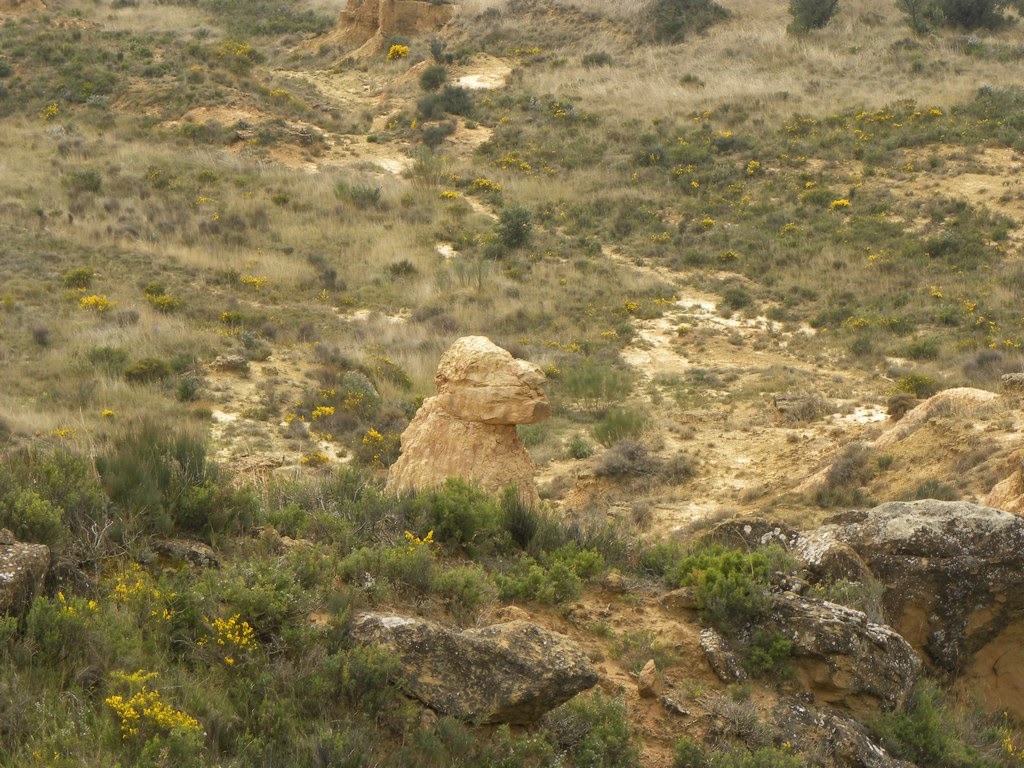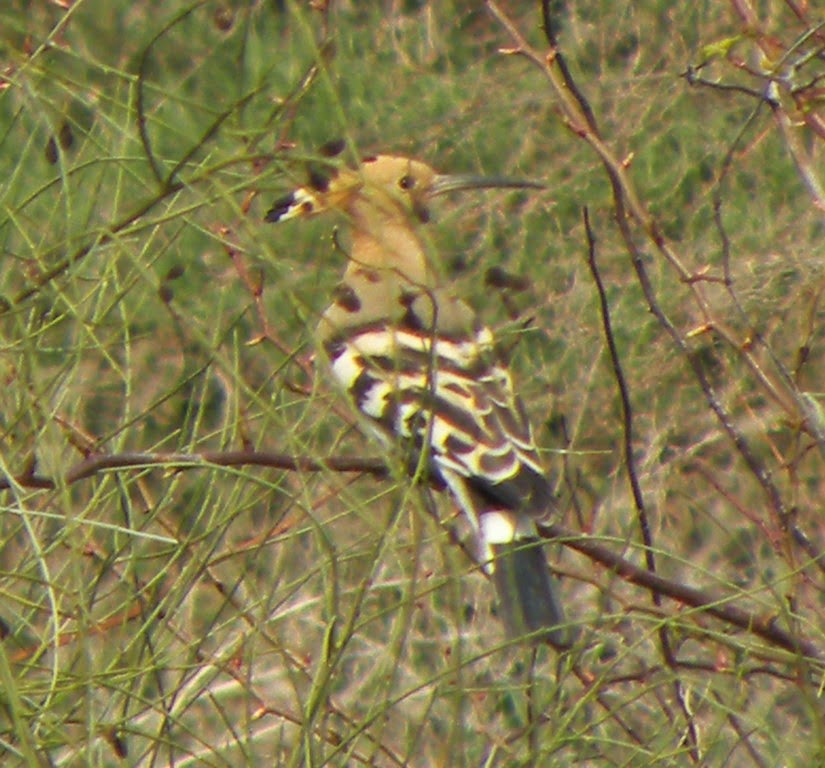Now back to 2014
After all the excitement over that Spanish Festoon, this thing appeared when out in the Steppes. At first I thought it's a moth but Phil reckons it's a Skipper of some sort, anyone got any ideas please - Josele couldn't put a name to it
Thanks to Phil Smith and his book, I can tell you this is a Mallow Skipper
On Friday I was able to take advantage of a day's guided birding with Josele, starting in the hills North of Loporzano - first stop and the lady guest ( who must put something miraculous in her tea) immediately found this Wallcreeper - see what I mean about the stuff in her tea?
There it is, look
long thin beak, too
the while we were being watched, as in "the One above sees all", maybe I looked a bit peaky?
This is a very high irrigation dam, ever so spectacular but the weather turned against us here
but not before I found this Alpine Saxifrage, not in flower. I understand they take years to produce a single spike then die - aaaa-aaah
More Vultures licking their lips
Cloud mist and no thermals = no raptors so Josele took us down to the steppes
but not before we found this group of several tens of Black Kites riding the wind up into, and presumably, over the mountains
Typical of the dry open Steppes is this Thekla lark
The place we were taken was composed of sandrock outcrops, the strata of varying hardness hence this spectacular erosion resembling a grumpy fat old man
nearby was this blue Rock Thrush
and as the day fined up and warmed, another large group of hitherto unseen Black Kite lifted off this outcrop and soared away at height
This place had been used as a source of stone by the Romans apparently, as evidenced by these cart tracks worn into the rock
The sand varied a lot in colour, a bit like Alum Bay on the Isle of Wight
another weird wind sculpture
and a more recognisable Hoopoe
The lady in the group asked to see a White Stork so we were taken to a small colony
undercarriage down, doors to manual, prepare to land!
Because of the improvement in the weather Josele took us back into the hills where the air was clear as a bell, fabulous, enabling us to watch Vultures as they came in to roost
and a final picture of Feral Goats, otherwise Vulture food if they slip
Superb trip, well worth the effort of getting there, including the flight cock-up!




























Hi Pete
ReplyDeletechecked in my book almost certainly a" MALLOW SKIPPER",cheers
Phil